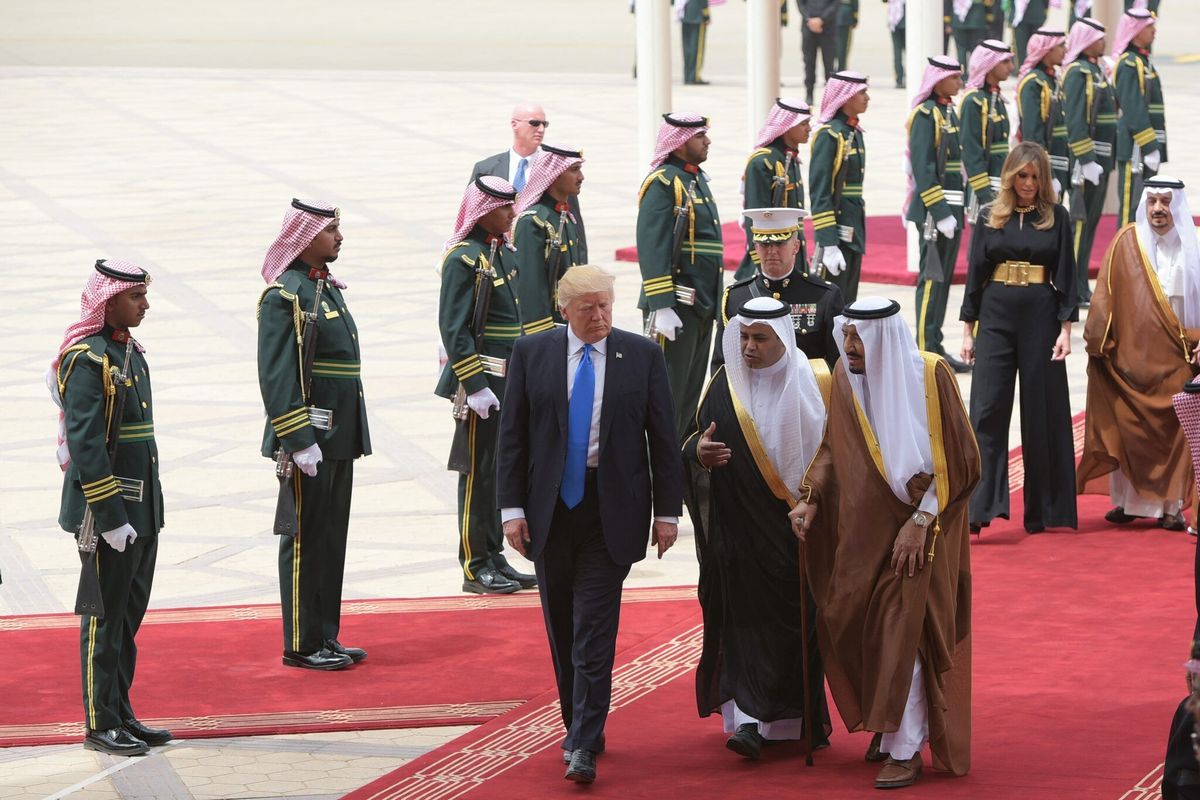DEEP DIVE - The Assad family - Hafez al-Assad and then his son Bashar - ruled Syria for 53 years. Their regimes were known for their iron grip, the jailing and torture of dissenters, and alliances with Russia, Iran and the militant group Hezbollah.
The revolution, when it came, took just ten days.
On Sunday, rebels led by the group Hayat Tahrir al-Sham (HTS) captured the Syrian capital, Damascus, encountering almost no resistance, and drove Bashar al-Assad from power.
HTS announced on its Telegram channel that it had taken control, and a few hours later said that Assad was gone. Syria was now “free of the tyrant,” the group said. Thousands of people gathered in a Damascus square, waving and chanting "freedom."
The Russian Foreign Ministry said early Sunday that Assad had resigned after talks with “several parties of the armed conflict.” Russian state media said Assad had arrived in Moscow, where he would be given asylum.
In the last stages of their advance, the rebels reportedly freed prisoners; videos circulated by monitoring groups showed men walking in the streets of Damascus after being freed from Sednaya Prison, and HTS said, "We celebrate with the Syrian people the news of freeing our prisoners and releasing their chains."
The capture of the capital capped a sudden and staggering fall for the regime.
Assad had largely quashed a rebellion in 2011, in the season of the “Arab Spring” revolts that brought down dictators in Tunisia, Libya and Egypt. Since then, various rebel groups had remained confined to slivers of territory in northwest Syria, posing no major threat to the government. Now, HTS and its allies are in charge.
The rebellion poses huge questions for a region that has already seen seismic changes since the Hamas attacks against Israel on October 7, 2023. Most of those questions involve one overriding concern: what will follow in Assad’s wake?
The rebels
All revolutions bring uncertainty, but in Syria - “the region’s most complex geography,” as Norman Roule, a former National Intelligence Manager for Iran at the Office of the Director of National Intelligence, put it to The Cipher Brief last week - the uncertainty is magnified by several factors.
Syria has been a key ally of Russia and Iran, a sworn enemy of Israel, and a powerful military player in the region for the past half century. It is home to multiple militias, a contingent of Turkish troops fighting Kurdish forces in the north, and 900 U.S. troops deployed to northeastern Syria, in Kurdish-held territory. Now the country is in the hands of a rebel group that was hardly known outside the region until it captured Aleppo, Syria’s second-largest city, on November 27.
The Israeli daily Haaretz put its concerns bluntly in a Sunday headline: “Post-Assad Syria is in danger of being run by out-of-control militias.”
HTS – the group’s full name means Headquarters for the Liberation of the Levant – is actually a coalition of ten armed groups that came together in 2012. According to Qutaiba Idlbi, director of the Syria Strategy Project at The Atlantic Council, the organization originally consisted of Syrian fighters who fought alongside Al-Qaeda against U.S. forces in Iraq.
Back then it was known as Jabhat al-Nusra, and the Al-Qaeda links and other activities earned the group a place on the State Department’s list of foreign terrorist organizations.
HTS formally broke ties with Al Qaeda in 2016 and disavowed a jihadist ideology.
“They came to Syria, they established this group,” Idlbi told The Cipher Brief. “Eventually, they defected from ISIS, they defected from Al-Qaeda, and they've defected also from the idea or Al-Qaeda ideology in terms of establishing an Islamic state beyond Syria’s borders.”
As HTS rolled through Syria over the past ten days, analysts were divided in their assessment of the group’s aims and ideology. Are they still the hardened Islamic militants who once drew inspiration from Al-Qaeda? Or have they really renounced their past and morphed into a group that aims to bring good governance to Syria?
“Although the militants…claim that they are not radical, Hayat Tahrir al-Sham formerly was associated with al-Qaeda,” Roule said. “They broke away. The idea of Islamic militants in charge of such central geography would be a consequential complication to the region.”
Some who have studied HTS say that while the proof will come in the days ahead, there have been encouraging signs.
Idlbi said that HTS had essentially transformed itself in recent years, working against ISIS and Al-Qaeda in northwest Syria. Dr. Patrick Clawson, research counselor at The Washington Institute, said HTS had turned its energies from Islamic militancy to building an effective coalition to oust Assad.
“They really have done a remarkable job of reinventing themselves over the last decade as being much more reasonable than so many of the Islamist groups,” he told The Cipher Brief. “I'm not a great fan of HTS, but what a difference between them and so many of the Islamist groups which were ideological and weren't interested in optimizing other people and weren't interested in good governance.”
“I think the main concern is whether HTS’s changes over the last few years were real, were permanent,” Idlbi said, “and whether this increase of power will encourage them to go back to where they were before.”
“Their religious conservatism remains,” said Clawson. “Ultimately, the test will come three or six months down the line as to whether or not HTS ends up being as kind of welcoming and as inclusive as it's claiming to be today.”
In the hours following their capture of Damascus, HTS said it had been in contact with Syria’s prime minister, Mohammad Ghazi al-Jalali, and would work with him to transfer power to a transitional governing body.
"The great Syrian revolution has moved from the stage of struggle to overthrow the Assad regime to the struggle to build a Syria together that befits the sacrifices of its people," the group said.
For his part, Ghazi called for free elections, and said that he would remain in the country and work with whomever Syrians choose as their leader.
The region
As for Syria’s “complex geography,” that has already changed in dramatic ways as well - in particular in terms of Assad's long alliances with Russia and Iran.
The former Syrian leader had snuffed out the earlier revolts with significant help from both those countries, and Assad clearly anticipated more help when HTS launched its rebellion. Only one week ago, Iran’s Foreign Minister Abbas Araghchi met with Assad in Damascus, and reportedly discussed sending troops to help quell the revolt. According to Iranian state media, Iran’s president, Masoud Pezeshkian, spoke to Assad Monday and expressed “confidence in Damascus’ ability to prevail.”
That help never came, and on Sunday Iranian military and diplomatic personnel were reportedly leaving Syria altogether.
In 2015, Russia intervened militarily to help Assad’s government hold off armed opposition groups, and Russia still maintains an air base and naval facility in Syria. As with Iran, over the past week Russia said that it would stand by Assad and offer assistance, including air strikes against HTS positions.
As The Cipher Brief reported last week, both countries faced challenges in coming to Assad’s aid – given Russia’s war against Ukraine and Israel’s weakening of Iran and its militant proxy Hezbollah, whose command structure was all but obliterated by Israeli strikes in Lebanon. Iran and Russia may also have judged the rebels’ momentum to be too swift or strong to repulse. Whatever the reason, when it counted, the two countries appeared to have given no significant military support.
In the short term at least, Assad’s fall is a strategic defeat for both countries, and one more sign of Iranian weakness.
“Tehran's flaccid response to the...collapse of the Assad regime,” Roule said on X, “echoes its inability to bring meaningful support to Hezbollah and Hamas as they faced Israeli action.”
As if to make that point, rebels reportedly stormed the Iranian embassy in Damascus Sunday, tearing down a banner of Iran’s late Quds Force Commander Qasem Soleimani and the Hezbollah leader Hassan Nasrallah, who was killed by the Israelis earlier this year.
For its part, Israel’s military said Sunday that its forces had entered a demilitarized buffer zone in territory it controls in the Golan Heights, which border Syria. Meanwhile, Iraq said it had secured its border with Syria, according to the official Iraqi News Agency (INA).
The U.S. response
The Syria upheaval is also complicated for the U.S., which long opposed Assad but is worried about what may come next.
One week ago, as the rebellion was gathering momentum, National Security Advisor Jake Sullivan told CNN that “HTS is actually a terrorist organization designated by the United States, so we have real concerns about the designs and objectives of that organization.” But, Sullivan added, “at the same time of course, we don't cry over the fact that the Assad government, backed by Russia, Iran and Hezbollah, [is] facing certain kinds of pressure.”
Speaking in Bahrain after the news of Assad’s fall, Daniel Shapiro, the U.S. deputy assistant secretary of defense for the Middle East, echoed Sullivan’s remarks. “No one should shed any tears over the end of the Assad regime,” Shapiro said.
The U.S. still has 900 troops in Syria, the vestige of a 2014 deployment that was aimed at defeating the Islamic State of Iraq and Syria. A U.S.-led coalition helped score decisive victories against ISIS, and the Trump and Biden administrations both chose to maintain a limited U.S. troop presence in Iraq and Syria to ensure that ISIS cannot rebuild in those countries.
Secretary of State Antony Blinken said Wednesday that the U.S. and its allies have “enduring security interests in Syria — particularly the interest in making sure that ISIS doesn’t resurrect and doesn’t come back…We also have in Syria many foreign terrorist fighters as well as their families who are in camps. We certainly don’t want to see those foreign terrorist fighters reemerge.”
Clawson said the U.S. should try to influence HTS to maintain its moderation.
“If I were advising the incoming administration, I would say that they ought to set forth the things which they think the HTS has to do to get off the [U.S.] terrorism list,” Clawson said. “Tell them what they have to do to get off the list.”
For now, the ten-day rebellion marks one more stunning change in the Middle East. The past 14 months have seen the unprecedented savagery of the October 7, 2023, Hamas attacks; Israel’s long and brutal war of retaliation (also unprecedented, in terms of the civilian casualty count); Israel’s decimation of Hezbollah; and unprecedented (that word again) direct military exchanges between Iran and Israel.
Now comes a kind of Berlin Wall moment for Syria – the sudden end of a brutal regime, and scenes that its people doubted they would ever see.
Muhammad al-Shammary, who fled Syria for Turkey in 2013, called the news of Assad's fall a "miracle" and told The New York Times Sunday that he hoped to return as soon as possible.
“They engraved this inside our minds,” al-Shammary said of the Assad regime. “That they would rule forever.”
Elaine Shannon contributed reporting.
Read more expert-driven national security insights, perspective and analysis in The Cipher Brief.













